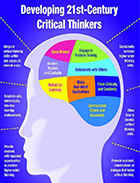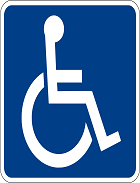The Key to Academic Success
The Key to Academic Success
With exams around the corner, children tend to feel edgy and scared. It is up to the teachers and the parents to boost their morale.
 Motivating children can go a long way in ensuring their academic success and personal development.
Motivating children can go a long way in ensuring their academic success and personal development. Motivation is derived from the word ‘motive’ which means needs, desires or wants. Motivation can be:
-
Intrinsic motivation
It refers to the motivation that comes from within due to a sense of accomplishment and knowledge. A student who is intrinsically motivated takes up an activity for his/her own interest.
-
Extrinsic motivation
This refers to the motivation from external factors like rewards,
complements, praise and recognition. A student who is extrinsically motivated takes up an activity based on a praise from a teacher.
complements, praise and recognition. A student who is extrinsically motivated takes up an activity based on a praise from a teacher.
Motivation is often used as a stimulus to encourage the students to head in the right direction. Some of the benefits of motivation are:
-
Encourages students
Motivating the students encourages them to perform better and aids in their personal development.
-
Induces creativity
Motivating the students makes them more creative and increases their eagerness to learn. Creativity further helps in personal development of the students.
-
Ensures involvement
Motivated students are highly involved in the learning process. They work towards giving their best in everything.
 What can lead to a lack of motivation?
What can lead to a lack of motivation?There are certain things that can lead to a lack of motivation. They are:
-
Fear of failure
Students often tend to fear failure, especially during the exams. This fear often leads to demotivation.
-
Lack of challenge
When the learning environment is not challenging enough, the students tend to feel demotivated. There are certain tasks that may seem uninteresting to the students, making it difficult for them to engage in the learning process.
-
Emotional problems
Students can feel demotivated due to family issues or issues with friends. Depression is another issue that can lead to demotivation. It can affect the academic and personal life of a student.
-
Low self-esteem
Students who lack confidence and have low self-esteem tend to have low motivation. Such students often believe that they are not capable of succeeding in anything they do.
-
Procrastination
Students tend to defer their assignments to the next day or till the end moment. This habit of procrastination can make them lose their interest and, eventually feel demotivated.
 Tips to motivate the students:
Tips to motivate the students:While it may seem difficult to motivate students, teachers can use the following tips to help them.
-
Praise the students
Teachers can recognise the efforts put in by the students in completing their assignments and being attentive in the class. Appreciation by the teacher will motivate and encourage the students to do well in the class.
-
Setting expectations
Teachers can set high but achievable standards in the classroom. When they do so, the students will be able to push themselves and scale greater heights.
-
Involve the students
The learning process is incomplete if the students are not involved in it. Teachers should ensure that they include the students in the learning process. By doing so, the students would feel motivated to learn.
-
Make learning fun
Teachers can motivate the students by making learning fun and engaging. This includes games and activities and, stepping away from the textbook. Learning can be made fun by converting outdoor spaces into a teaching space.
-
Explain the ‘why’ of things
Students will show an active involvement when they are kept in loop with whatever is happening in the classroom. When teachers tell them why something is done or why something has to be done, the students will feel motivated.
-
Provide feedback frequently
Developing a feedback mechanism in the classroom will help the students understand what they are doing right, where they are making mistakes and where improvement is needed. Teachers should make it a point to talk to the students on a regular basis, to let them know about their performance.
 Reward or punishment to motivate?
Reward or punishment to motivate?Rewards and punishments are reinforcement methods adopted by schools to bring about changes in the students’ behaviour. Different thoughts have been voiced out regarding ‘reward’ and ‘punishment’.
Reward is a positive form of motivation where the students are given a treat, or a recess time based on their performance in the class. High performing students usually enjoy this kind of motivation. But, on the flipside, reward as a form of motivation may encourage students to complete the tasks purely for the sake of pleasing the teacher and obtaining a reward.
Punishment is a negative form of motivation which is adopted when students do not follow the decorum in the classroom. Punishment usually involves withholding something that the student enjoys, like the PT class. This form of motivation isn’t completely beneficial as the student may behave well only to avoid the punishment, but not to develop himself/herself.
With the right balance between reward and punishment, and by making learning fun, a teacher can pave way for the academic success of the students.





















